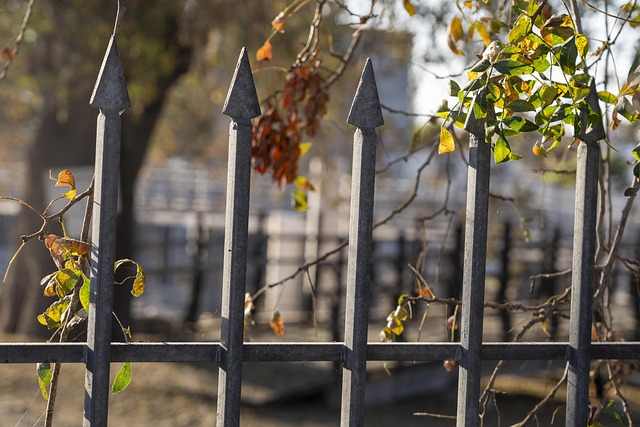In New Bedford, Massachusetts, enhancing your outdoor space with a wooden fence offers both aesthetic appeal and functional benefits. This article delves into the art of wooden fence installation, guiding residents through the process from start to finish. We explore the advantages of hiring local contractors, highlighting their expertise in navigating unique regional considerations. Key factors for successful installation are outlined, ensuring a durable and visually pleasing result. Additionally, we provide a step-by-step guide and post-installation care tips, empowering homeowners with the knowledge to maintain their new fence.
- Understanding Wooden Fence Installation in New Bedford
- Benefits of Choosing a Local Contractor
- Key Factors for Successful Fence Installation
- The Installation Process: Step-by-Step Guide
- Post-Installation Care and Maintenance Tips
Understanding Wooden Fence Installation in New Bedford
In New Bedford, Massachusetts, wooden fence installation is a popular choice for homeowners and businesses alike, offering both aesthetic appeal and practical benefits. Understanding the process involves recognizing the various types of wooden fences available, such as picket fences, privacy fences, and post-and-rail fences, each serving different purposes and design preferences. The installation typically begins with measuring the area, selecting the appropriate materials, and preparing the ground to ensure a sturdy foundation.
Professional installers consider factors like weather conditions, local regulations, and specific client requirements to guarantee a durable and visually pleasing fence. Proper installation includes digging holes for posts, attaching panels or pickets, and securing everything with brackets and fasteners. Regular maintenance, such as painting or sealing, is crucial to extend the lifespan of the wooden fence and preserve its natural beauty.
Benefits of Choosing a Local Contractor
Choosing a local contractor for your wooden fence installation in New Bedford has numerous advantages. Firstly, it supports the local economy by keeping money within the community. Local businesses often understand the specific needs and regulations of their area, ensuring your project complies with city codes efficiently. This knowledge can also lead to more tailored solutions that fit your property’s unique characteristics.
Additionally, hiring a nearby contractor means faster response times and more flexible scheduling. You’re likely to get priority service since these professionals are invested in their local community and want to build lasting relationships with neighbours. Their proximity also makes it easier to communicate throughout the installation process, ensuring your expectations are met or exceeded.
Key Factors for Successful Fence Installation
When it comes to successful wooden fence installation, several key factors play a crucial role in ensuring long-lasting and aesthetically pleasing results. The first consideration is choosing the right type of wood suitable for your region’s climate conditions. Different woods have varying resistance to rot, insects, and weather changes, so selecting a durable species like cedar or pressure-treated pine can significantly impact the fence’s longevity.
Additionally, proper planning and preparation are essential. This includes assessing the site, ensuring adequate clearance from structures and property lines, and considering any local regulations regarding fence heights and materials. Clear communication with your installation service provider is vital to understanding their process, expected timeline, and any potential challenges they might encounter during the installation process.
The Installation Process: Step-by-Step Guide
The installation process for a wooden fence begins with careful planning and measurement to ensure the fence aligns perfectly with your property’s dimensions. The first step involves marking the perimeter of the desired fence line, taking note of any gates or entry points that need to be incorporated. Next, the area is cleared, and any necessary preparation work is done, such as removing existing fences or obstacles.
Once the site is ready, posts are strategically placed at regular intervals along the marked line. These posts serve as the fence’s foundation and must be securely anchored in the ground using concrete. After the posts are set, horizontal rails are attached, providing a framework for the panels. The wooden fence panels are then installed, secured to both the rails and posts with nails or screws. Finally, a top rail is added for extra support and aesthetic finish.
Post-Installation Care and Maintenance Tips
After your wooden fence installation is complete, proper care and maintenance will ensure its longevity and preserve its natural beauty. Regular cleaning is essential to remove any dirt, debris, or mildew that may accumulate over time. Use a soft brush or sponge and mild soap to gently clean the fence, avoiding harsh chemicals that could damage the wood.
Painting or staining your wooden fence every few years can protect it from the elements and enhance its aesthetics. Choose a high-quality exterior paint or stain suitable for wooden surfaces. This protective layer will not only safeguard your investment but also ensure your fence remains vibrant and attractive for years to come.
